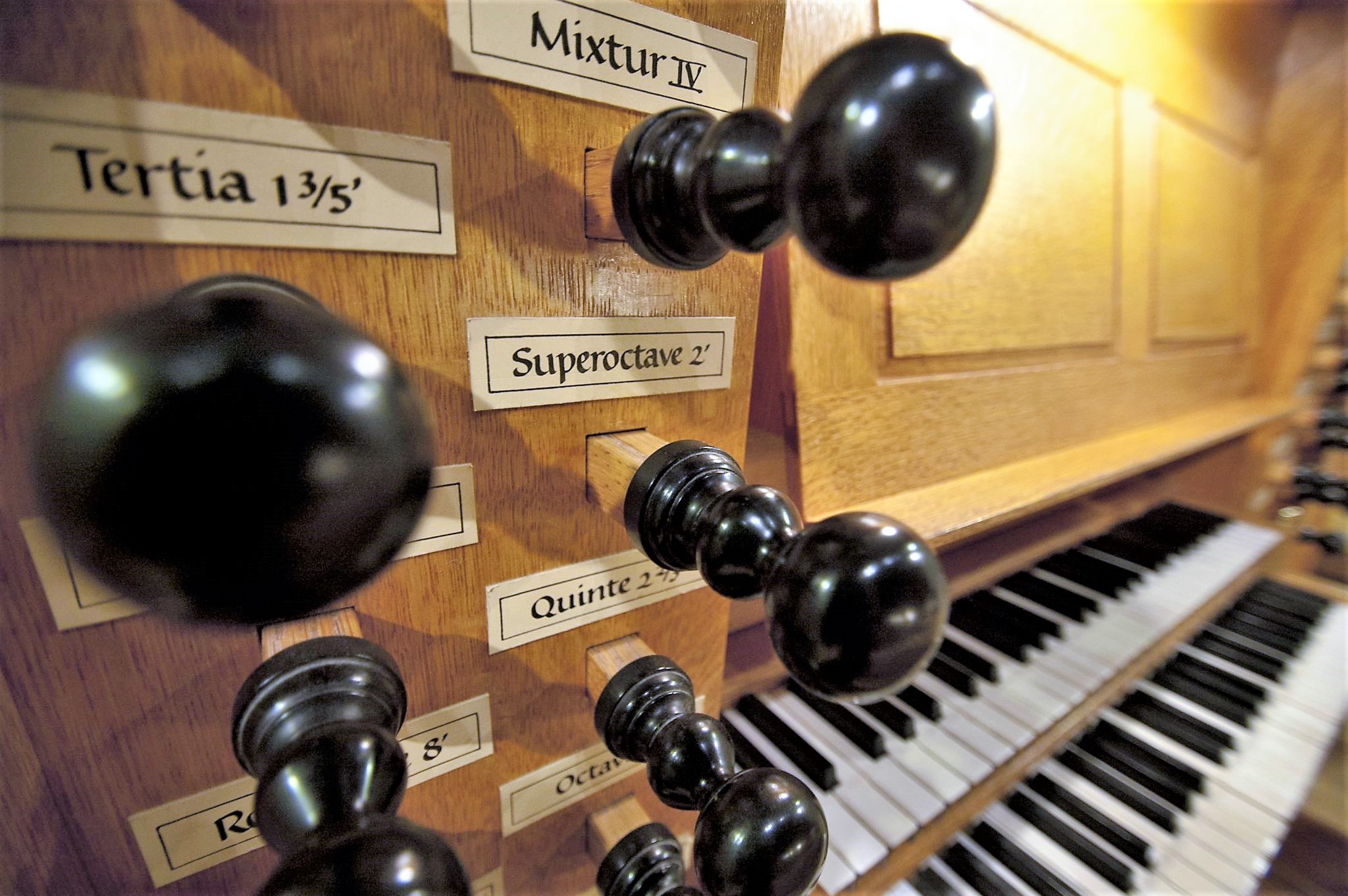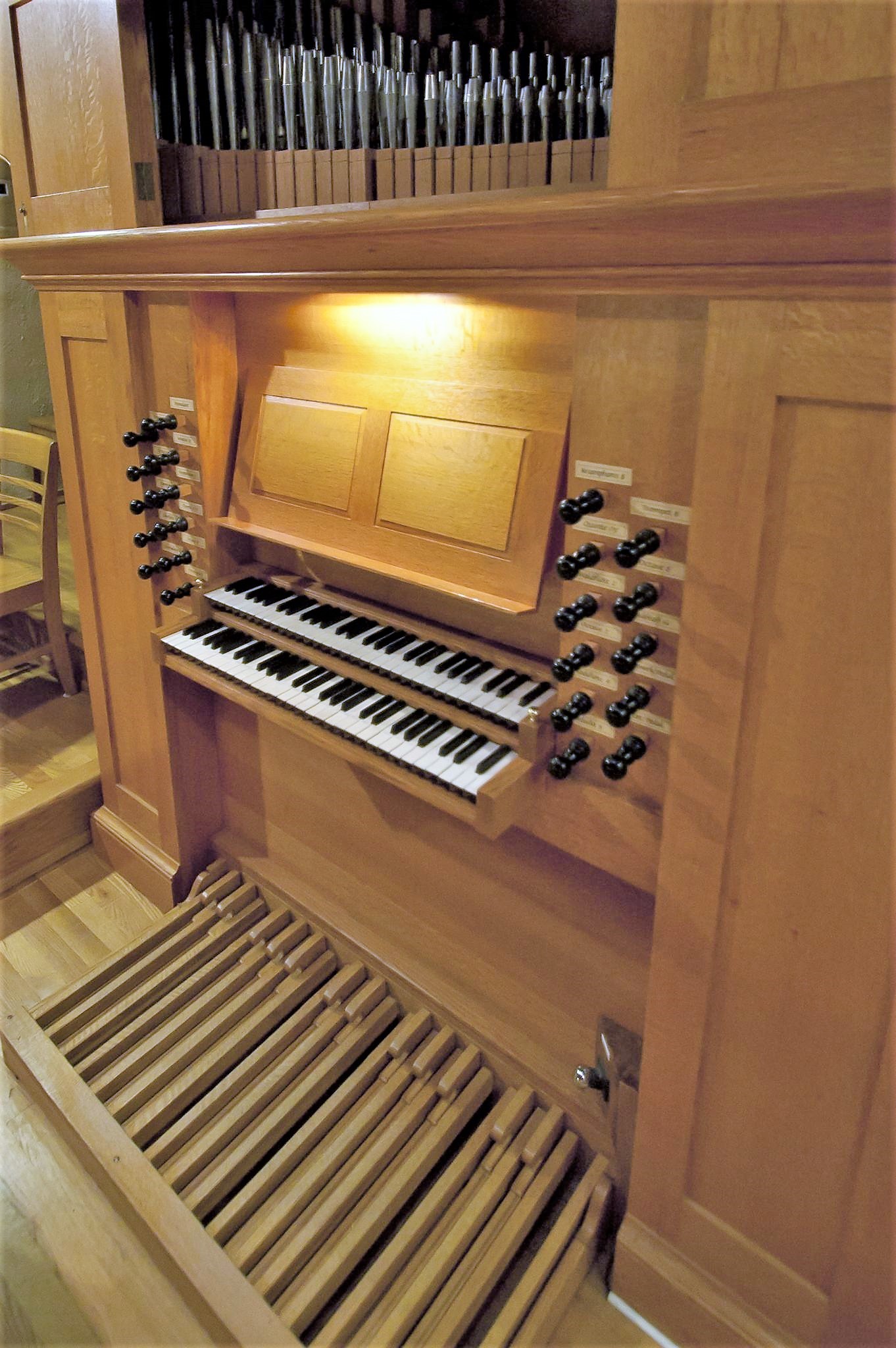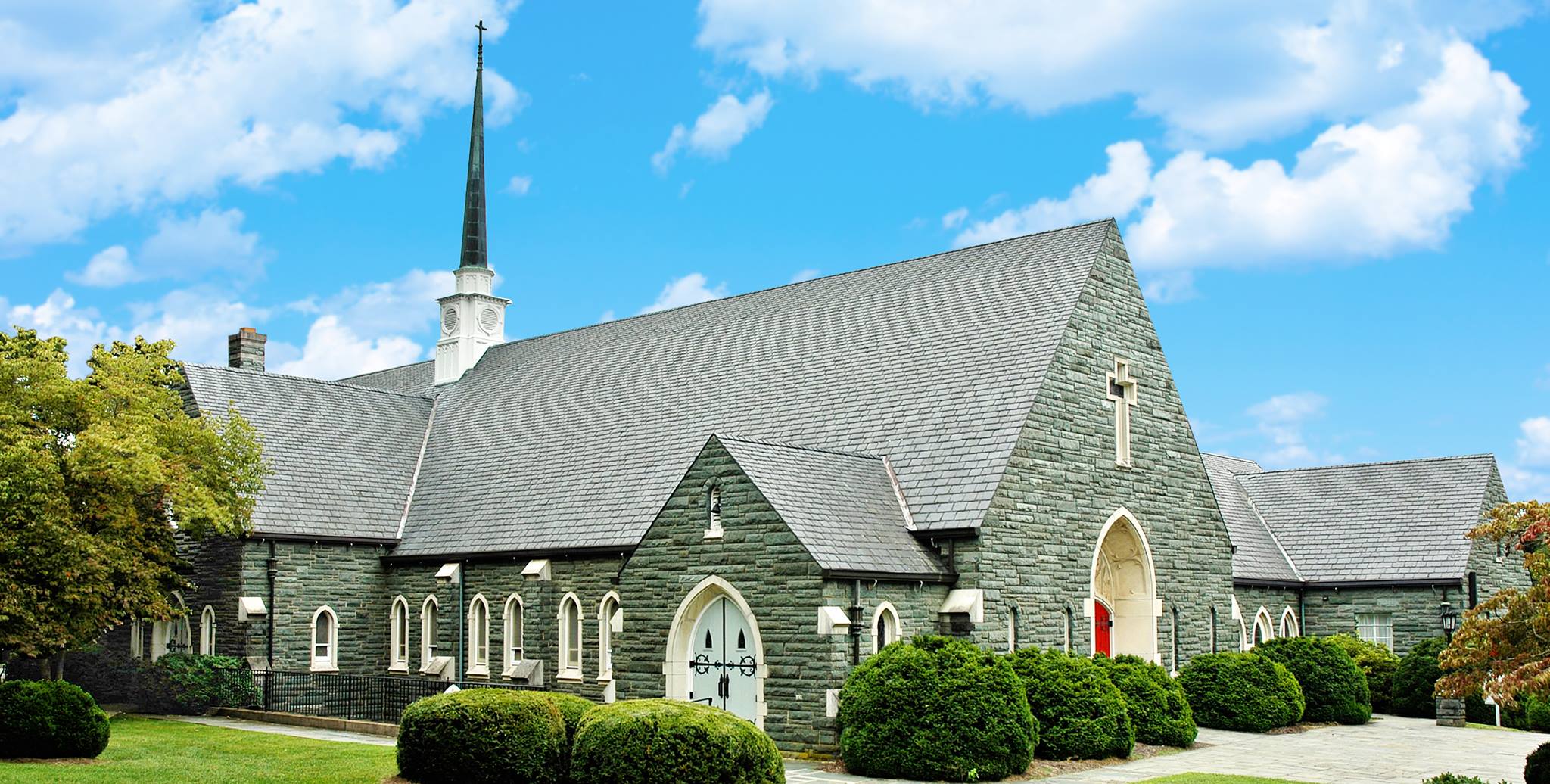Holy Trinity Lutheran Church: Sanctuary; rear gallery
1000 Langhorne Road
Lynchburg, VA
Images
 Unknown - Drawstops (Photograph by Taylor & Boody website, submitted by Jeff Scofield/Jeff Scofield)
Unknown - Drawstops (Photograph by Taylor & Boody website, submitted by Jeff Scofield/Jeff Scofield) Unknown - Console (Photograph by Taylor & Boody website, submitted by Jeff Scofield/Jeff Scofield)
Unknown - Console (Photograph by Taylor & Boody website, submitted by Jeff Scofield/Jeff Scofield) Unknown - Church interior, gallery and organ (Photograph by Taylor & Boody website, submitted by Jeff Scofield/Jeff Scofield)
Unknown - Church interior, gallery and organ (Photograph by Taylor & Boody website, submitted by Jeff Scofield/Jeff Scofield) Unknown - Gallery and organ (Photograph by Taylor & Boody website, submitted by Jeff Scofield/Jeff Scofield)
Unknown - Gallery and organ (Photograph by Taylor & Boody website, submitted by Jeff Scofield/Jeff Scofield) ca. 2019 - Organ case (Photograph from an archival source: Church website, submitted by Jim Stettner/Jim Stettner)
ca. 2019 - Organ case (Photograph from an archival source: Church website, submitted by Jim Stettner/Jim Stettner) 2018-10-31 - Church exterior (Photograph from an archival source: Church Facebook page, submitted by Jim Stettner/Jim Stettner)
2018-10-31 - Church exterior (Photograph from an archival source: Church Facebook page, submitted by Jim Stettner/Jim Stettner)
Consoles
Main
- Organ type: Traditional Without Cover
- Console position: Keydesk Attached
- 2 manuals
- 19 stops
- 19 registers
- 3 divisions
- Key action Type: Mechanical (Suspended Tracker)
- Stop action Type: Mechanical
- Stop layout Type: Drawknobs in Vertical Rows on Flat Jambs
- Manual compass: 56 notes
- Pedal compass: 30 notes
- Expression Type: No Enclosed Divisions
- Combination action: None
- Has hitchdown couplers
Notes
2004-10-30 - Status Note: There 1996 -Database Manager
2004-10-30 - Kellner unequal temperament. -Database Manager
2010-07-05 - Updated through online information from Charles Hoilman. -- Kellner-Bach temperament; metal pipes of hammered lead-tin alloys; case of solid red oak finished with orange shellac. -Database Manager
Stoplist
Source: Typed stoplist from the OHS PC Database. Date not recorded
Lynchburg, Virginia
Holy Trinity Lutheran Church
Taylor and Boody, Op. 18, 1990 - Original Specifications
GREAT COUPLERS
16' Quintadena GT / PD
8' Principal BW / PD
8' Rohrflöte
8' Baarpjip BW/GT (shove)
4' Octave *
2 2/3' Quinte
2' Superoctave
1 3/5' Tertia
IV Mixture
8' Trompet
BRUSTWERK
8' Gedackt
4' Blockflöte
2' Octave
2' Waldflöte
1 1/3' (Quinte)
8' Krumphorn
Tremulant
PEDAL
16' Subbass
8' Octave
8' Trompet **
* plays from Pedal when half drawn
** alternates with Gt. Trompet
NOTES
Pedal chest and the Great chest are one-behind-the-other, with the 4' Octave mounted at the end of each chest's channel. There are two sliders, one for the
Pedal divison and one for the Great division. The sliders are bored so that in
the half-drawn position the slider for the Pedal chest channels is lined up to
supply wind to the toe-board. In the fully-drawn position, the slider for the
Great comes into position to supply the wind to the toe-board and the pedal
slide pulls "past" the open position so that there is not blow-back from the
Pedal chest channels to the Great channels. there is also channelling in the
toeboard itself to accomodate the two different positions required by the double-
draw, and the fact that the channel spacing on the Great chest and the Pedal
chest are different.
Other Links
Regrettably, it is not possible to display the information about the sponsor of this pipeorgandatabase entry or if there is a sponsor. Please see About Sponsors on Pipe Organ Database.





